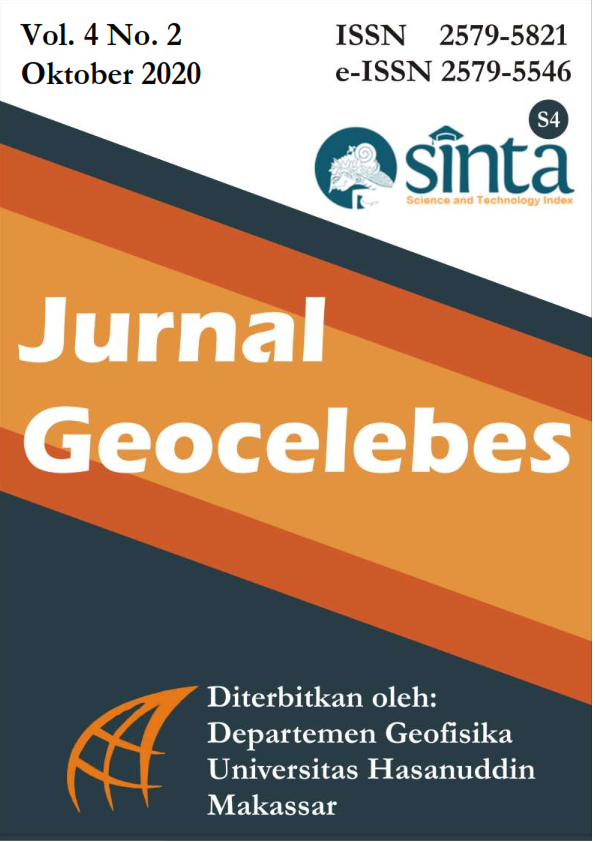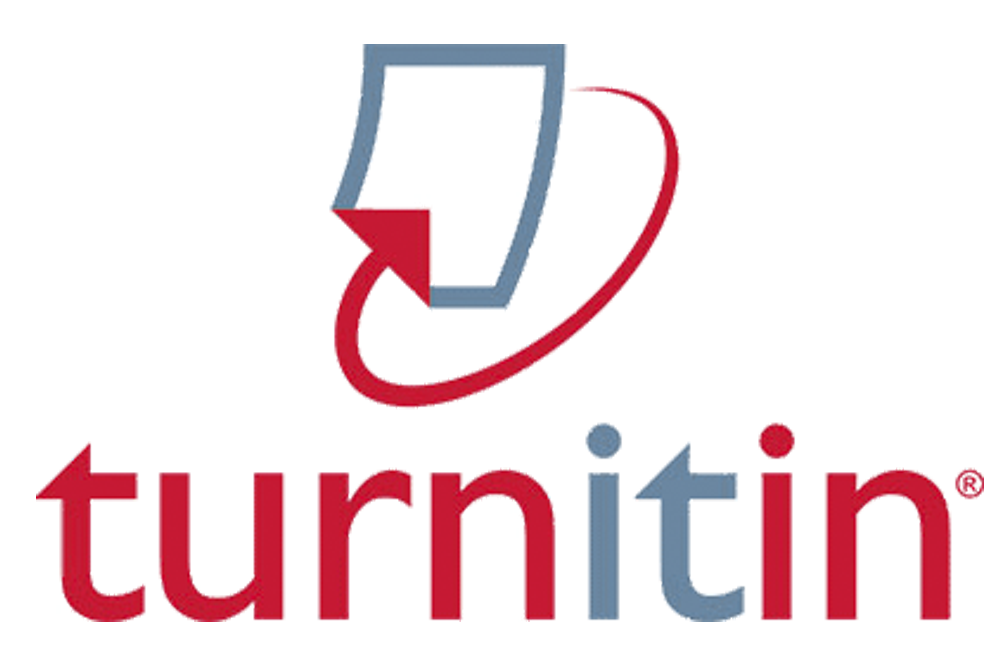KARAKTERISASI AIR DAERAH PANAS BUMI PENCONG DENGAN METODE AAS (ATOMIC ABSORPTION SPECTROPHOTOMETER) DI KECAMATAN BIRINGBULU, KABUPATEN GOWA PROPINSI SULAWESI SELATAN
DOI:
https://doi.org/10.20956/geocelebes.v4i2.8928Abstract
Penelitian ini mengenai karakterisasi air daerah panas bumi Pencong dengan Metode Atomic Absorption Spectrophotometer (AAS). Penelitian ini bertujuan untuk mengetahui ciri fisik, sifat kimia dan menentukan kelayakan dari cadangan panas bumi. Parameter utama untuk pengembangan daerah prospek panas bumi adalah suhu fluida di reservoir, permeabilitas, batuan reservoir, dan volume (luas dan tebal) dari reservoir. Metode AAS berprinsip pada absorbsi cahaya oleh atom, atom – atom menyerap cahaya tersebut pada panjang gelombang tertentu, tergantung pada sifat unsurnya. Dari hasil analisis laboratorim unsur yang dominan untuk ketiga sampel berturut – turut berupa bikarbonat, sebanyak 116,6 ppm; 120,3 ppm; dan 112,8 ppm, kemudian natrium sebanyak 112,96 ppm; 110,29 ppm; 108,5 ppm, kemudian silika sebanyak 48,46 ppm; 48,46 ppm; 48,33 ppm. Dari hasil laboratorim tersebut diperoleh nilai persentase kandungan ion HCO3- sebanyak 65,75%; 68,51%; 65,72%, Cl- sebanyak 17,44%; 17,61%; 18,02% dan SO42- sebanyak 16,78%; 13,86%; 16,25%, menunjukkan bahwa mata air panas daerah tersebut termasuk tipe air bikarbonat. Perkiraan temperatur bawah permukaan dengan menggunakan geothermometer Na – K pada daerah tersebut di tempat sampel I sampai tempat sampel III adalah 168,45oC, 148oC dan 160,02oC, dan termasuk dalam entalpi sedang dimana mempunyai batas suhu > 125oC, yang sistem pengendali mata air panas yang berada di Desa Pencong berasal dari interaksi batuan yang terjadi secara konveksi.References
Aribowo, T. 2011. Aplikasi Inferensi Bayes pada Data Mining terutama Pattern Recognition. Program Studi Sistem dan Teknologi Informasi. Bandung: Institut Teknologi Bandung.
Day, R.A. dan Underwood, A.L. 2002. Analisis Kimia Kuantitatif. Jakarta: Erlangga.
Fournier, R.O. 1979. A revised equation for Na-K geothermometer. Geothermal Resources Council Transactions. 3, pp.221–224.
Giggenbach, W.F. 1988. Geothermal solute equilibria. Derivation of Na – K – Mg - Ca geoindicators. Geochimica et Cosmochimica Acta. 52(12), pp.2749–2765.
Grant, M.A. and Bixley, P.F. 2011. Geothermal Reservoir Engineering 2nd Edition. Netherland: Elsevier.
Gupta, H. and Roy, S. 2007. Geothermal Energy an Alternate Resource for the 21st Century. Amsterdam: Elsevier B.V.
Hazuardi, 1992. Pengantar Eksplorasi Panas Bumi. Cepu: PPT-MIGAS (Pusat Tenaga Perminyakan dan Gas Bumi).
Hasim, L.F., Robyansah, dan Hasan, T.A. 2014. Aplikasi Geofisika Terhadap Eksplorasi Sumber Daya Panas Bumi. Makassar: Jurusan Fisika FMIPA UNHAS.
Khopkar, S.M. 1990. Konsep Dasar Kimia Analitik. Jakarta: Universitas Indonesia Press.
Nicholson, K. 1993. Geothermal Fluids: Chemistry and Exploration Techniques. Berlin: Springer-Verlag.
Nurwidyanto, I.M., Yustiana, M., dan Widada, S. 2006. Pengaruh Ukuran Butir terhadap Porositas dan Permeabilitas pada Batupasir. Berkala Fisika. 9(4), pp.191–195.
Saptadji, N. M. 2009. Karakterisasi Resevoir Panas Bumi. Bandung: Institut Teknologi Bandung.
Sismanto dan Andayany, H., 2012. Pengembangan Persamaan Geotermometer Empiris Untuk Estimasi Suhu Reservoir Sumber mata Air Panas. Prosiding Pertemuan Ilmiah XXVI HFI Jateng & DIY, Purworejo, 14 April 2012.
Skoog, D. A. 2000. Principles of Instrumental Analysis. USA: CSB College Publishing.
Suparno, S. 2009. Energi Panas Bumi: A Present from the Heart of the Earth, Edisi Pertama. Depok: Penerbit UI.
Supriyanto, Samin dan Kamal, Z. 2007. Analisis Cemaran Logam Berat Pb, Cu dan Cd Pada Ikan Air Tawar Dengan Metode Spektrometri Nyala Serapan Atom (SSA). Prosiding Seminar Nasional III SDM Teknologi Nuklir. Yogyakarta. ISSN 1978-0176.
Downloads
Published
How to Cite
Issue
Section
License
Authors who publish with this journal agree to the following terms:
- Authors retain copyright and grant the journal right of first publication with the work simultaneously licensed under a Creative Commons Attribution License that allows others to share the work with an acknowledgement of the work's authorship and initial publication in this journal.
- Authors are able to enter into separate, additional contractual arrangements for the non-exclusive distribution of the journal's published version of the work (e.g., post it to an institutional repository or publish it in a book), with an acknowledgement of its initial publication in this journal.
- Authors are permitted and encouraged to post their work online (e.g., in institutional repositories or on their website) prior to and during the submission process, as it can lead to productive exchanges, as well as earlier and greater citation of published work (See The Effect of Open Access).





